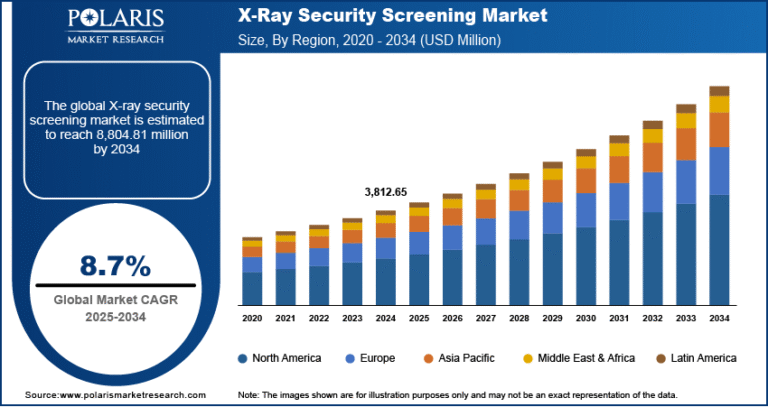IoT Chip Market Size, Share & Trends Analysis growing at a CAGR of 9.3% from 2024 to 2030

The global IoT chip market size was estimated at USD 454.82 billion in 2023 and is projected to reach USD 895.05 billion by 2030, growing at a CAGR of 9.3% from 2024 to 2030. The market is driven by the increasing demand for connected devices, rapid urbanization, and the need for efficient and cost-effective solutions.
Key Market Trends & Insights
- In terms of region, North America was the largest revenue generating market in 2023.
- The IoT chip market in the U.S. is projected to grow at a CAGR of over 5.0% from 2024 to 2030.
- In terms of product, the connectivity integrated circuits (ICs) segment accounted for the largest share of 25.0% in 2023.
- The sensors segment is anticipated to record the fastest growth from 2024 to 2030.
Market Size & Forecast
- 2023 Market Size: USD 454.82 Billion
- 2030 Projected Market Size: USD 895.05 Billion
- CAGR (2024-2030): 9.3%
- North America: Largest market in 2023
Request a free sample copy or view report summary: https://www.grandviewresearch.com/industry-analysis/iot-chip-market-report/request/rs1
The proliferation of smart homes, cities, and industries has led to a surge in demand for IoT-enabled devices, which require advanced processing capabilities, memory, and connectivity. Additionally, the need for real-time data analysis and processing is propelling the adoption of IoT chips with advanced capabilities such as artificial intelligence (AI), machine learning (ML), and edge computing.
The increasing adoption of smart home devices, wearable technology, and industrial IoT applications necessitates the development and deployment of efficient and versatile IoT chips. These chips are fundamental to enabling the connectivity, processing power, and energy efficiency required for IoT devices to function effectively. As more devices become interconnected, the demand for advanced IoT chips are expected to continue to rise in the coming years.
The increasing demand for IoT-enabled devices across various industries such as industrial automation, healthcare, transportation, and consumer electronics is driving the growth of the market. The growing need for automation, remote monitoring, and predictive maintenance in industries has led to a surge in demand for IoT-enabled devices that can process large amounts of data and provide real-time insights. Additionally, the growing adoption of smart home devices such as smart speakers, thermostats, and security cameras is also contributing to the growth of the Market.
Furthermore, the incorporation of AI into IoT chips is reshaping the semiconductor industry by driving demand for more powerful and efficient IoT chipsets. Semiconductor companies are focusing on developing AI-specific architectures, such as embedded GPUs, accelerators, and neuromorphic computing solutions, to meet the growing requirements of AI-enabled IoT devices. This trend is expected to present significant growth opportunities for the market.
Companies operating in the market are implementing various strategies to gain a competitive edge in the market. Some companies are focusing on partnerships and collaborations with other players in the ecosystem to expand their product offerings and reach new markets. For instance, in April 2024, Qualcomm Technologies, Inc. acquired Foundries.io, a UK-based provider of open-source embedded software and cloud-native platforms for IoT and edge computing applications. The acquisition is part of Qualcomm’s strategy to expand its IoT product portfolio and strengthen its open-source expertise to accelerate the commercialization of its Qualcomm Linux offerings. Such strategies by market players are expected to fuel market growth in the coming years.
Market Concentration & Characteristics
The IoT chip market is characterized by a high degree of innovation. This growth can be attributed to various factors, including the increased adoption of AI and machine learning capabilities to enable edge computing and real-time decision-making, advancements in connectivity technologies such as Wi-Fi 6, Bluetooth 5.2, and 5G to enable faster and more reliable connections, growing focus on energy efficiency and power management techniques to extend battery life in IoT devices, the integration of more robust security features such as hardware-based cryptography to protect IoT devices from cyber threats, and the emergence of new applications in the automotive and industrial IoT sectors, are driving innovation in IoT chips to power advanced technologies.
The level of mergers & acquisition activities in the market is expected to be moderate. Companies operating in this sector are focusing on expanding their product portfolios, acquiring new technologies, or consolidate their market positions. These strategic moves are expected to significantly impact the competitive landscape of the industry by reshaping market share and influencing pricing dynamics.



![osmometers Market Analysis: Opportunities, Innovations, and Growth Potential Through [2025-2034]](https://beeswire.com/wp-content/uploads/2025/07/polaris-75-768x768.png)

